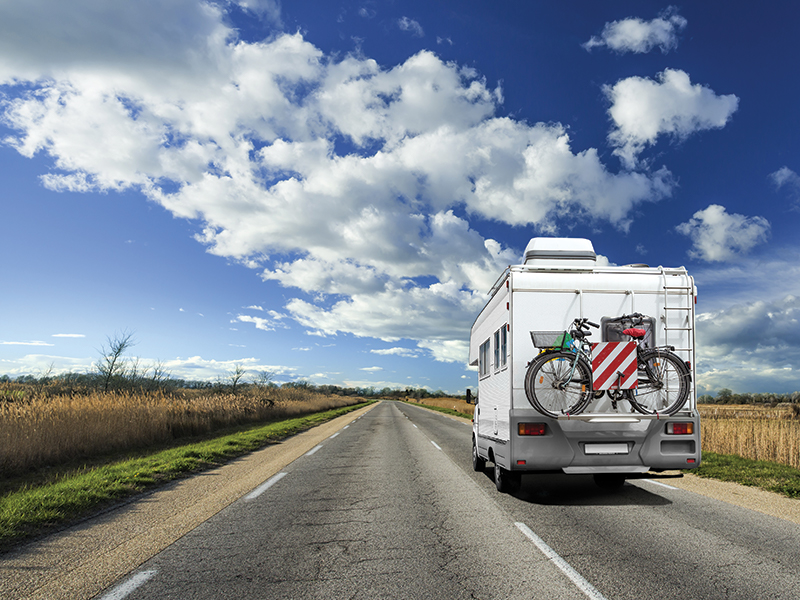How to know whether your RV’s propane tanks are running on empty — and where to go to keep your trip running smoothly
Using propane at your RV or campsite is safe, affordable, and convenient. Unfortunately, many portable propane tanks don’t come with a fuel gauge like your camper’s dashboard does. Plus, RV-ers are part of a special community: While propane filling stations and exchange locations are always nearby, they might not always be as obvious as the corner gas station.
Here’s the scoop on when and where to refill — while camping safely and on budget.
How to know when it’s time to refill your RV’s propane tank
One reliable way to know when it’s time for a refill is to get to know your tanks and your usage patterns:
ASME (American Society of Engineers) tanks:
- Keep an eye on your fuel gauge. This is located on a panel either near the tank or inside the RV. When it starts running low, it’s time to think about a refill.
- Make a note of how often you need to refill your tank. Since RV appliances often have different efficiency ratings and capacities, and because people use RV appliances differently, it’s hard to pinpoint exactly how long a propane tank will last you personally. Some estimates say that one gallon of propane lasts 95 hours — but that can easily change depending on the BTU ratings of your appliances. Understanding your individual usage cycle will help you have more control over your refilling schedule.
- Notice how your appliances are behaving. If the flames on your burners start spitting or flickering, or if other appliances seem like they’re losing their juice, it could be time for a refill or a safety check.
DOT (Department of Transportation) cylinders:
- Your DOT cylinder may come with a fuel gauge; if not, you can also have one installed. As with an ASME tank, keep tabs on the fuel status and on how long you can expect to go before refilling.
- Similar to the ASME tanks, if you notice appliances functioning poorly, it is a possible signal that it’s time to refill your DOT cylinder.
Small DOT cylinders such as grill tanks:
- Put a fuel gauge on it and keep tabs.
- Pick it up: If it feels light, it’s running low. Time to refill with propane. (For reference, what is commonly referred to as a 20lb tank holds about 4.2 gallons of propane. AmeriGas Cylinder Exchange fills tanks with 3.5 gallons, in compliance with safety regulations.)
- For smaller DOT cylinders (such as the 20lb tank mentioned above) that you may not use as frequently, stay ahead of the game and schedule a tank check-up and refill at the beginning of every season.
- Keep a spare tank so you have backup when you start running low.
You can learn more about ASME and DOT cylinders here.
How to refill your propane tank — and where
There are numerous options for refilling a propane tank. They vary depending on the size and function of your tank, but suppliers make it convenient to find the nearest propane filling stations.
Fill up at your campsite: RV parks and campgrounds often have a propane filling station on-site. Look for this service when you make your reservations.
Go to a propane filling station: Many gas stations are equipped with facilities to refuel the ASME tanks and DOT cylinders with propane on mobile homes and campers. Just remember to plan ahead a little — if you’re traveling in a larger class-A motorhome (say, 45 feet), you’ll want to make sure you can pull up.
Swap out your old grill tank for a new one: With smaller DOT cylinders like grill tanks, it can sometimes be more convenient to simply exchange your empty tank for a full one. You can find AmeriGas tank exchange services at supermarkets, home improvement stores, convenience stores, garden centers, gas stations, and more — making it a simple one-and-done job. Or, see if your area offers tank delivery services with Cynch.
NOTE: No matter where you go to fill up, DO NOT REFILL THE TANK YOURSELF. This must always be done by a certified propane professional.
When it’s time to dispose of your tank...
Make a habit of doing a visual inspection of your tanks every time you refill them. If you notice damage such as rust, substantial cracks, dents, leaks, or other signs that a tank might be unsafe to use, consult a propane professional. It may be time for a fresh tank.
Wherever you go, you can be certain that a full tank of propane — and the rewards of a safer journey — are never far away.
Related articles:
What’s the Difference Between Propane Refill and Propane Exchange?
How to Buy, Exchange, or Dispose of a Propane Tank
Propane Tanks Go to blog list page filtered for the category

